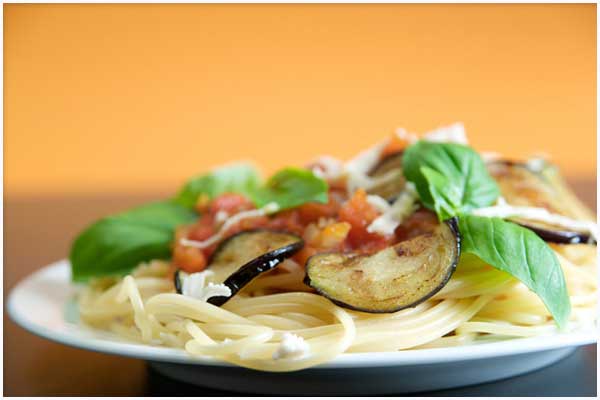
The Best Italian Pasta Experience: Ten Must-Try Dishes
December 18, 2011
Discover Italy's top 10 best pasta dishes in 'The Ultimate Italian Pasta Experience' - a culinary tour of authentic, flavorful Italian classics.
By: Simona Piccinelli / Last updated: March 26, 2024
Estimated reading time: 11 minutes
Truffles are a gourmet delicacy, one of the most expensive and desired in the world. Foodies swoon over them, international top chefs search them out and bid for them at auction, and truffles are undoubtedly one of the priciest and most precious foodstuffs on the planet.

Although truffles are in such high demand, and so appreciated, they are still shrouded in mystery for many. So we decided to chat with some of the professional truffle hunters and producers we work with in different regions of Italy to ask them the numerous questions we get regularly asked by our “tartufi” loving guests. We spoke to Natale and Giorgio Romagnolo in Piedmont, Cristiano Savini in Tuscany, and Saverio and Gabriella Bianconi in Umbria.
Truffles are an underground Ascomycete fungi. They grow symbiotically with specific tree roots, called in Italian “simbionti,” and require unique microclimatic conditions. They have an external part called the “peridio,” which may have different textures and colors depending on the kind of truffle, and an inner, pulpy part called the “gleba.”
The word “truffle” has a Latin origin. It comes from the word “tuber,” which means “lump.” Over the centuries, it evolved to become “tufer,” and all the European terms derive from that: tartufi (Italy), trufa (Spain), truffe (France), Trüffel (Germany), trufa (Portugal), trufel (Poland), tryffle (Sweden), only to name a few.
We need to dust off those biology books we studied at school! Like all fungi, truffles come from spores. In spring, the spores in the soil germinate and produce fragile filaments around the roots of specific trees. At the end of spring/summer, these filaments colonize the plant’s roots and grow special “organs” called mycorrhiza, which provide the fungus with relatively constant and direct access to carbohydrates, glucose, and sucrose from the plant. In return, the plant gains the benefits of higher absorptive capacity for water and mineral nutrients. In fall/winter, mycorrhizas push the vegetative part of the fungus, called mycelium, to grow, and this will become the fruiting body of the fungus, namely the truffle.
As truffles are underground, they cannot spread spores in the air, so they have a distinctive and strong scent. This aroma attracts some animals (pigs, dogs, squirrels, rats, foxes, moles, etc.); they eat the truffle, and spore dispersal is guaranteed.
Tree species that “produce” white truffles include poplar, oak, linden, and sometimes hazel. Truffles prefer argillaceous or calcareous soils, which are well-drained. They require a chilly, humid microclimate, with average temperatures of 6°C/42.8 F.
White truffle, the precious Tuber Magnatum Pico, is not common nor easy to find; the only places in the world where you can find it are Northern Italy (Piedmont), Central Italy (Tuscany, Marche, Umbria), and in small areas of Istria and Slovenia. The best, most coveted white truffles are the ones from Alba, Acqualagna, and San Miniato.
You can find Black truffles in Europe (Italy, Spain, France, Greece, Turkey), Northern Africa, New Zealand, Asia, and America.
All over the world, you have many kinds of truffles, of which 63 are classified as Tuber. You have about 25 different truffles in Italy, but only nine are cataloged as edible. Each kind of truffle has its own season.
The truffles you can usually find in the market are the following 6; for each one, you can see its season (it can change depending on a specific region):
Usually, you are not allowed to hunt truffles from the end of August to the middle of September.
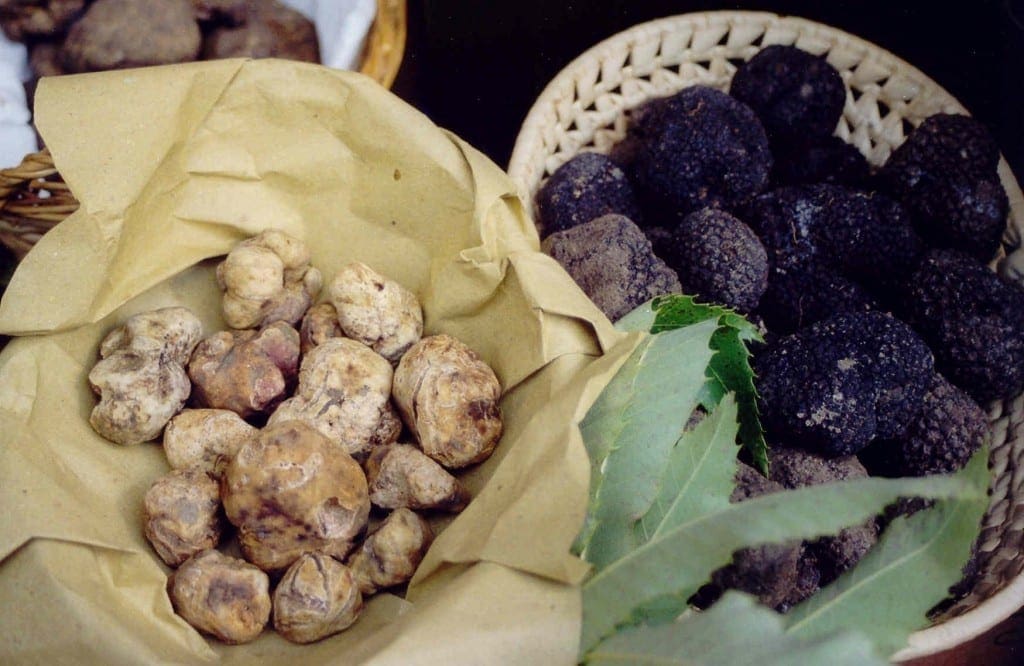
The main difference you can see is, of course, how they look. White truffles have a smooth layer, from white to ochre color outside and white-hazelnut color inside. Black truffles have a rough, black, or dark brown rind. Inside, it is white – hazelnut if it is a summer black truffle, black or dark grey if it is a winter black truffle.
But the most important difference is their aroma. White truffles have a more intense aroma, a more comprehensive range of perfumes, and a “symphony” of scents: garlic, honey, spices, and hay, to name a few. Black truffles have a less powerful smell and are less complex and more reminiscent of mushrooms, soil, and underbrush.
Do not forget that white truffles are less common than black ones and can be found in a very limited area because they need a precise microclimate and tree roots to grow. That’s why the price is also very different. White truffles cost up to 7 or 10 times more than the black ones.
In previous centuries, pigs were used to go truffle hunting, especially female swine, particularly attracted to the truffle´s heady scent. They were hard to control, though, as being pigs, it was difficult to stop them from gobbling up the precious truffles.

Truffle dogs have generally replaced truffle pigs, as dogs are easier to manage, train, and more disciplined.
You don’t have truffle hunting dog breeds as such, but some feature qualities are particularly suitable for this activity. Pointing breeds – such as a pointer, Italian Bracco, Italian Spinone, Setter, and Cocker Spaniel – are perfect, even more so if the dog comes from a crossbreed. The Lagotto and Labrador breeds have recently proven very popular in Italy.
To be a good truffle hunter, a dog needs an excellent sense of smell, endurance, intelligence, learning ability, and adaptability.
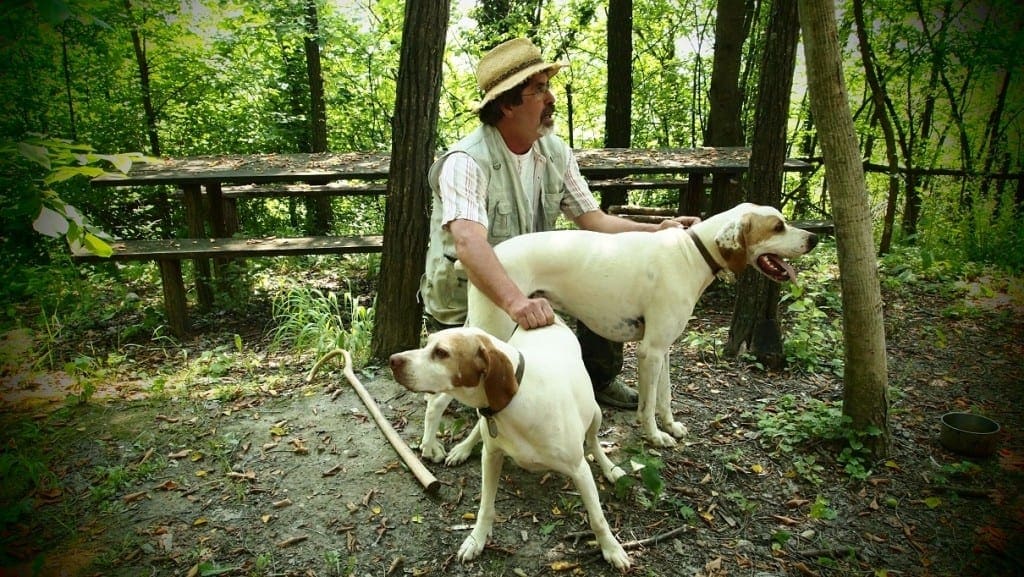
The best way to be sure to buy a good truffle is to know the truffle hunter or the truffle trader and to trust his honesty and accuracy, as we can do now, after many years of cooperation with our “truffle partners”! This, of course, is not always possible, so here are some guidelines: first of all, try to buy fresh truffles at well-known, certified markets, fairs, and auctions and check the average price on the market for that specific year and kind of truffle you want to buy; then check the truffle with your sight, touch, and smell.
Visual examination:
Truffle has to be clean and intact. It is not whole; it could have hangers-on or be ruined by the dog during the hunt. If it has dark spots, it might be rotten. Be sure that holes are not filled with soil and that the color is not altered with cornflour or anything similar.
Physical examination:
If you gently press the truffle, it has to have a good level of consistency. If it is gummy or elastic, it is not fresh.
Nasal examination:
Precious white truffle has a pleasant, agreeable, well-balanced aroma. If you smell ammonia, methane, or fermented notes, this suggests it is not fresh.

At a restaurant, always ask to see the truffles before they slice them on the food and check them as described above. If the price is per gram, ask to check the weight. An average portion is usually 10 grams and costs about 40 euros.
Fresh truffles, especially white ones, must be eaten as soon as possible. You can store them for a limited time, wrapping them individually in a humid cloth or putting them in a glass jar with airtight closure at 3-6°C (37.4/42.8 F), like the fridge. If you change the cloth daily, you can keep white truffles for about a week and black ones for about two weeks.
Generally speaking, the white truffles found in November and December usually last longer than those at the beginning of the season (September and October).
Black truffles (usually not the precious Norcia black truffle, but the summer black ones) can be frozen once sliced, but never do this with white truffles!
You can enhance the shelf life and versatility of truffles by processing them. For black truffles, consider finely grinding them, while white truffles can be thinly sliced. Gently blend either variety with high-quality butter and a hint of salt. This truffle-infused butter can then be used to impart a luxurious truffle essence to a wide array of dishes. When properly stored, this culinary delight can retain its exquisite flavor for up to a month.
With black truffles (summer and winter ones), you can cut them and whirl them in a blender with extra virgin olive oil and a pinch of salt to get a thick sauce that you can put in a glass jar. It lasts about 40 days, or you can even freeze it.
You can do pretty much the same with the whitish truffle (Bianchetto, NOT with the Magnum Pico): you slice it, scald in extra virgin olive oil, and then put it in a glass jar to be sterilized in hot water for about 15 minutes.
The most accessible alternative to buying fresh truffles is buying preserved truffles or truffled food, but only from professional and trustworthy merchants and transformers, and always check the percentage of truffles in each product. Excellent producers are Savini, Bianconi, Boscovivo, and Tartuflanghe.
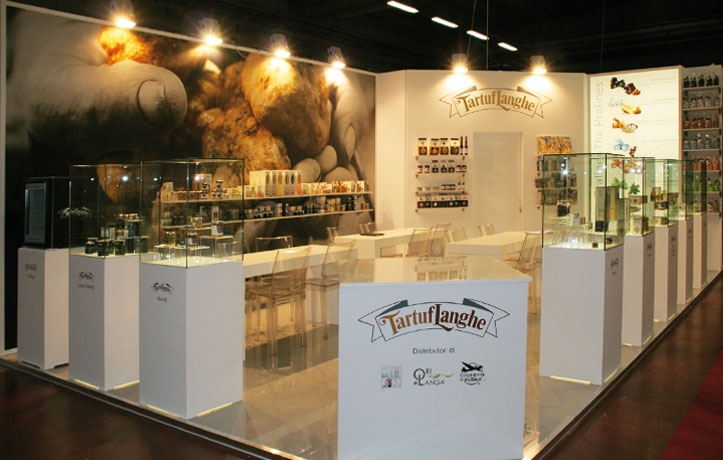
The best way to eat the precious white truffle Magnum Pico (and also Bianchetto) is, without any doubt, to have it fresh – as fresh as possible – and sliced. You can use it on hot dishes, like risotto, handmade egg pasta, fried egg, fondue, or cold dishes, like tartare or salad of raw Caesar’s mushrooms.
Norcia black truffle can be used raw (but ground and not sliced) on food or cooked.
Other black truffles express their best if heated, so you should briefly cook them. A great match is with anchovies in the sauce.
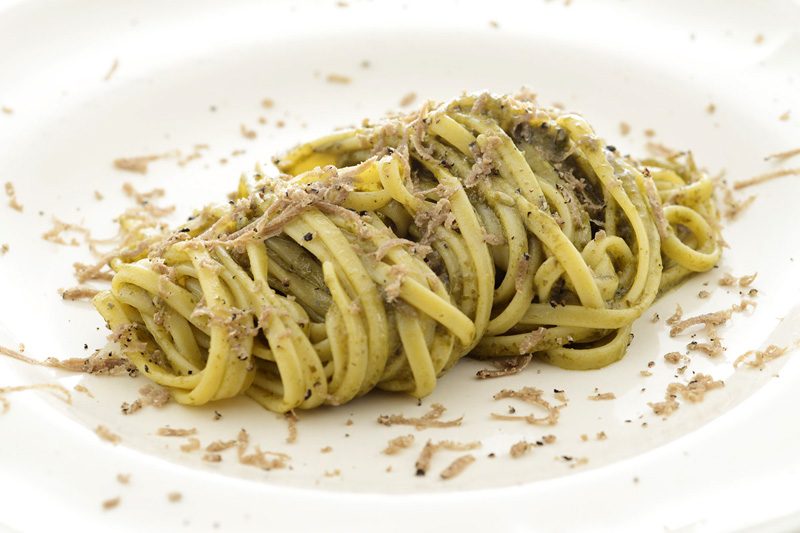
Truffles are seasonal products, so their availability, quality, and price vary yearly, depending on rainfall, temperature, and climatic aspects. Also, the shape and size affect the price.
The precious white truffle, the Tuber Pico Magnum, is the most expensive; this 2013 season, you can find it from 1000 to 3000 euros per kilo (2.2 pounds), depending on the size and region of origin.
Here, you can check the average price of Alba’s precious white truffles.
Is there anything else you want to know about truffles? Have we piqued your curiosity? Don´t hesitate to drop us a line!
If you would like us to customize an exclusive luxury tour, contact us and let us know your travel plans. We offer luxury food and wine tours for private groups of a mininium two guests. In addition, all of our private, chauffeured tours are available year-round upon request.


Chet Shannonsays:
November 10, 2018 at 4:23 am
Question about the truffle tours. I am guessing that any truffles that are found on a tour must be paid (separately from tour costs) for by the people taking the tour if they want to keep them?.. Is that correct? Thanks.
Breno Sans De Menezezsays:
September 28, 2017 at 10:42 pm
Is it legal to take truffles outside of Italy? Should expect any trouble bringing them in my luggage?
gensays:
August 3, 2017 at 12:21 pm
Thanks for reaching out. The key months for white truffle are October and November. Hope this helps.
kblackbenzsays:
August 3, 2017 at 12:57 am
I am writing a book, the protagonist comes back from Alba Italy with a white truffle, end of march. He knows someone there and its been an unusual season...believable?
A Quick Shopper’s Guide to Truffle Types - Susan Alexander Trufflessays:
July 2, 2014 at 2:45 am
[…] Black and White Truffles […]